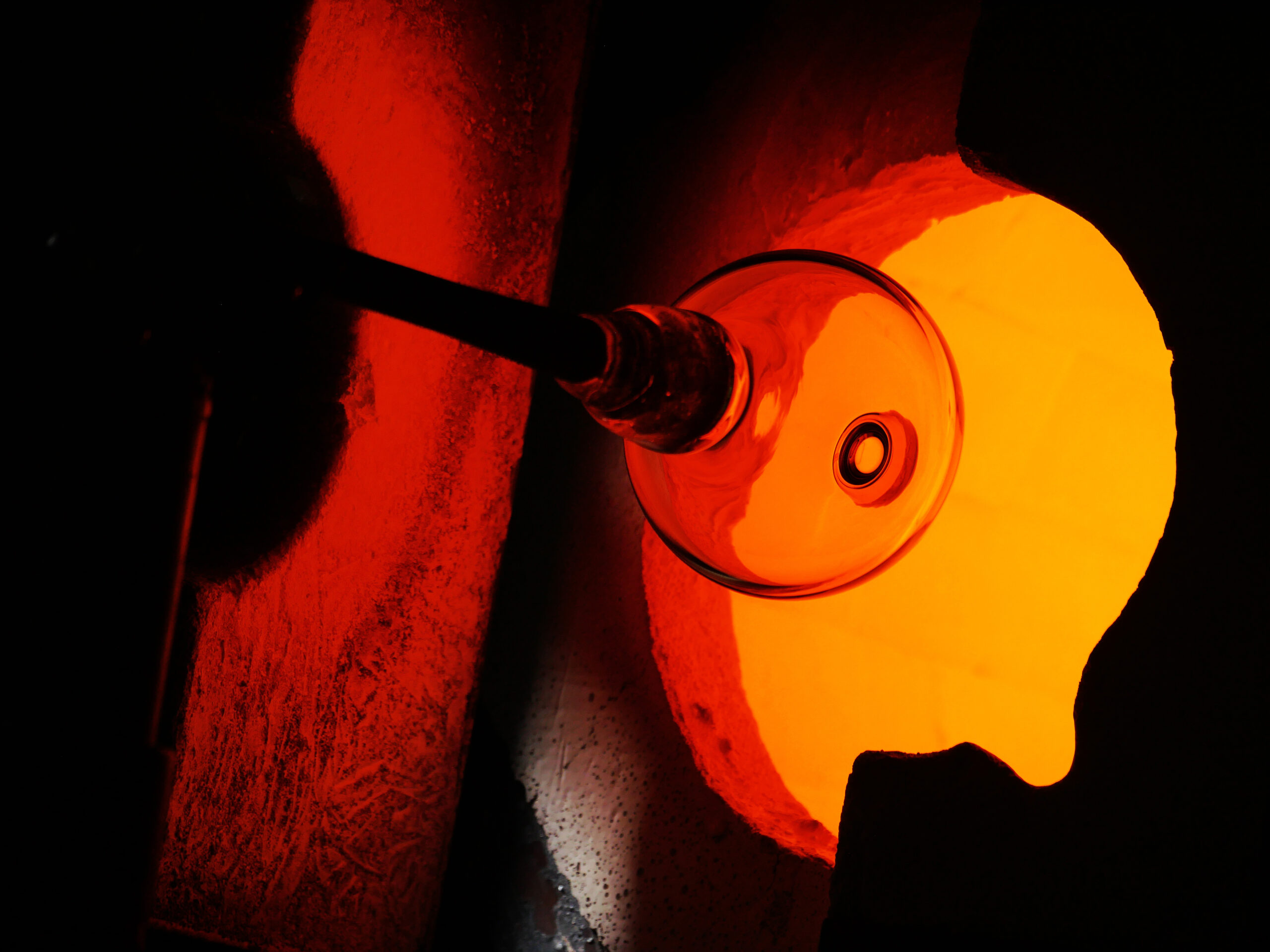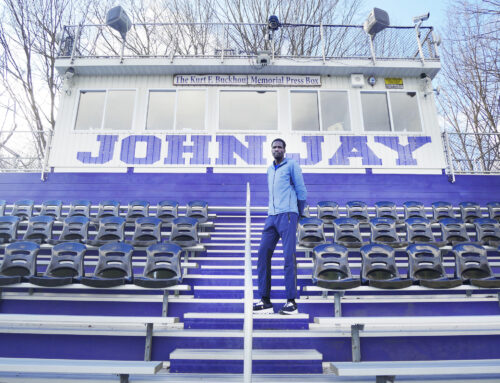By Gia Miller
Photography by Justin Negard & Elena Wolfe
Moshe Bursuker is living the artist’s dream. After 20 years in the industry, he’s developed a successful business and his own brand. He has a steady stream of clients who respect and appreciate his talent. He’s built a 1,000-square-foot studio and an additional 1,000-square-foot private gallery in his own backyard. His commissioned pieces are in buildings throughout the world, and his original sculptures are regularly displayed in galleries. And yet, he describes himself as“some guy from Westchester who has a small, intimate studio where I can create art.”
Bursuker practices an ancient discipline that, in many ways, hasn’t changed much since the 1600s. As a professional glassblower, he regularly works in front of an open kiln, heating pre-mixed raw materials (soda ash, bentonite, limestone, etc.) to over 1000oF so he can craft glass sculptures, wall art, lighting and decorative pieces. The process of turning molten glass into a work of art is dangerous, and it requires planning, concentration, precision and repetition. Bursuker loves every moment of it.
“Everything I make presents a different set of challenges,” he says. “But I make them all because I’m interested in all of them. I really get excited about the technical challenges in glass, especially when things are hard or haven’t been done before. I’m always trying to push the boundaries of art and design, especially in my sculptures. Freeform thinking in glass and trying to execute something that’s really difficult is always a challenge, but it’s also fun.”
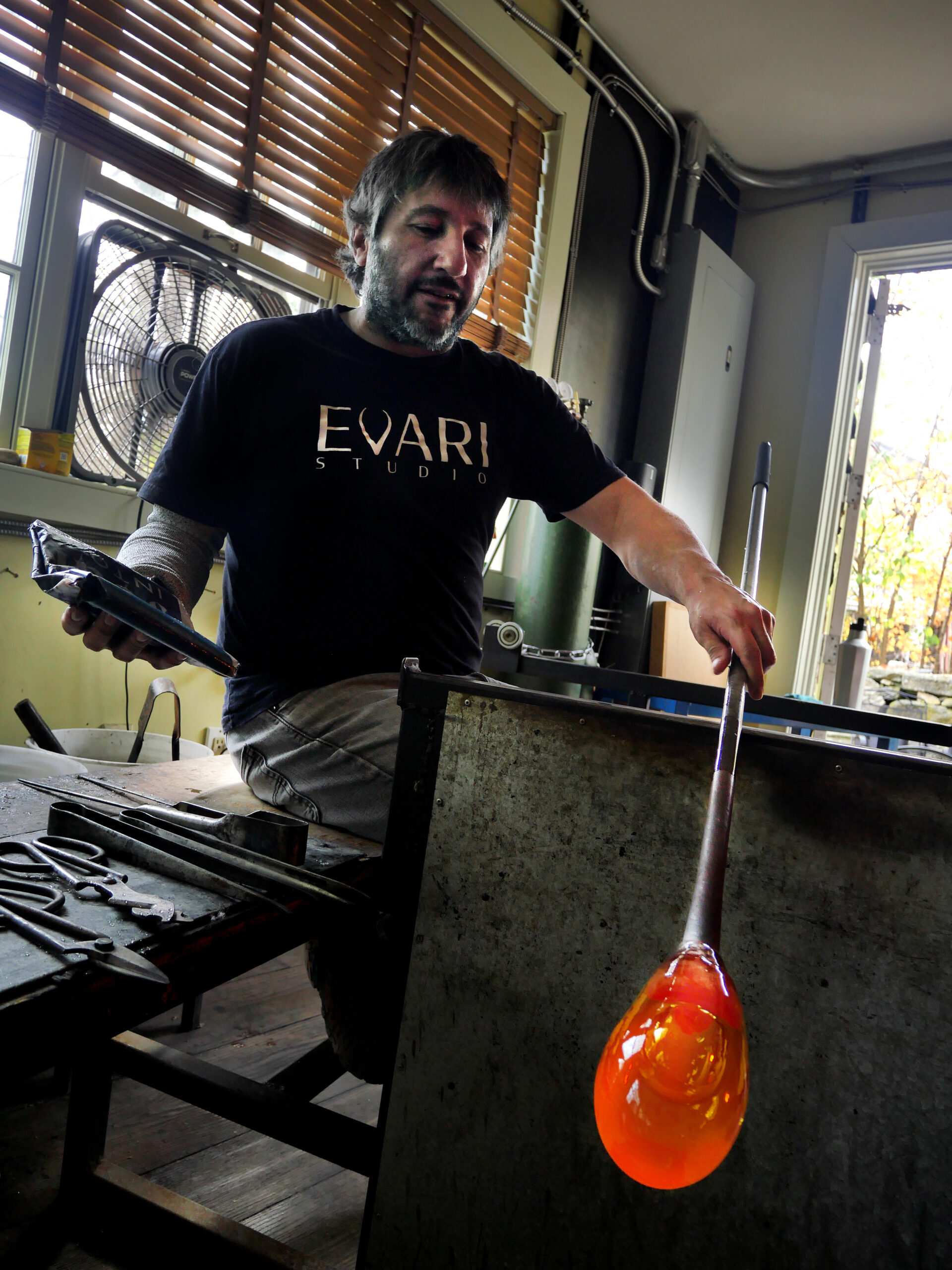
Transforming a passion into a business
Bursuker is passionate about glass, specifically clear glass. He finds its natural and authentic beauty stunning.
“I love, love, love clear glass,” he says. “It’s the most pure. It’s like a musician who uses their voice to sing. It’s not muddied up by color or pattern. It’s a beautiful form, and it’s in its natural state. And because glass is a natural material, I don’t feel too bad about throwing out scrap glass because it decomposes and becomes part of the earth again.”
Bursuker is also passionate about explaining the skill and craftsmanship required to work well with glass. He says it takes years of practice to simply achieve a level of proficiency. And, since glass is what he calls “the new kid on the block” in the world of fine art, the expertise required, along with the process itself, is not well understood.
“People have collected paintings and sculptures forever,” he says. “Even the art of photography, which is just a little over 100 years old, is much older than glass. So even though the practice is centuries old, historically, glass was functional. It only became part of the fine art world during the last 20 or 30 years. I think the first college major in glassblowing was created in the late 80s.”
In fact, when Bursuker attended the Hartford Art School at The University of Hartford to study photography and sculpture, there was only one glassblowing course offered. It seemed interesting, so he took the course. It changed his life.
“When I left college, I knew that I didn’t want to stop glass blowing, but I also didn’t know exactly how to have a career in it because nobody really outlined that for me,” he remembers. “So, my first job was at a graphic design firm, but my second job was working as a part-time glassblowing assistant at UrbanGlass in Brooklyn.”
Bursuker hustled. Every morning, he’d go to the studio and ask who needed help. He would work for whoever he could, often assisting three or four different people each week.
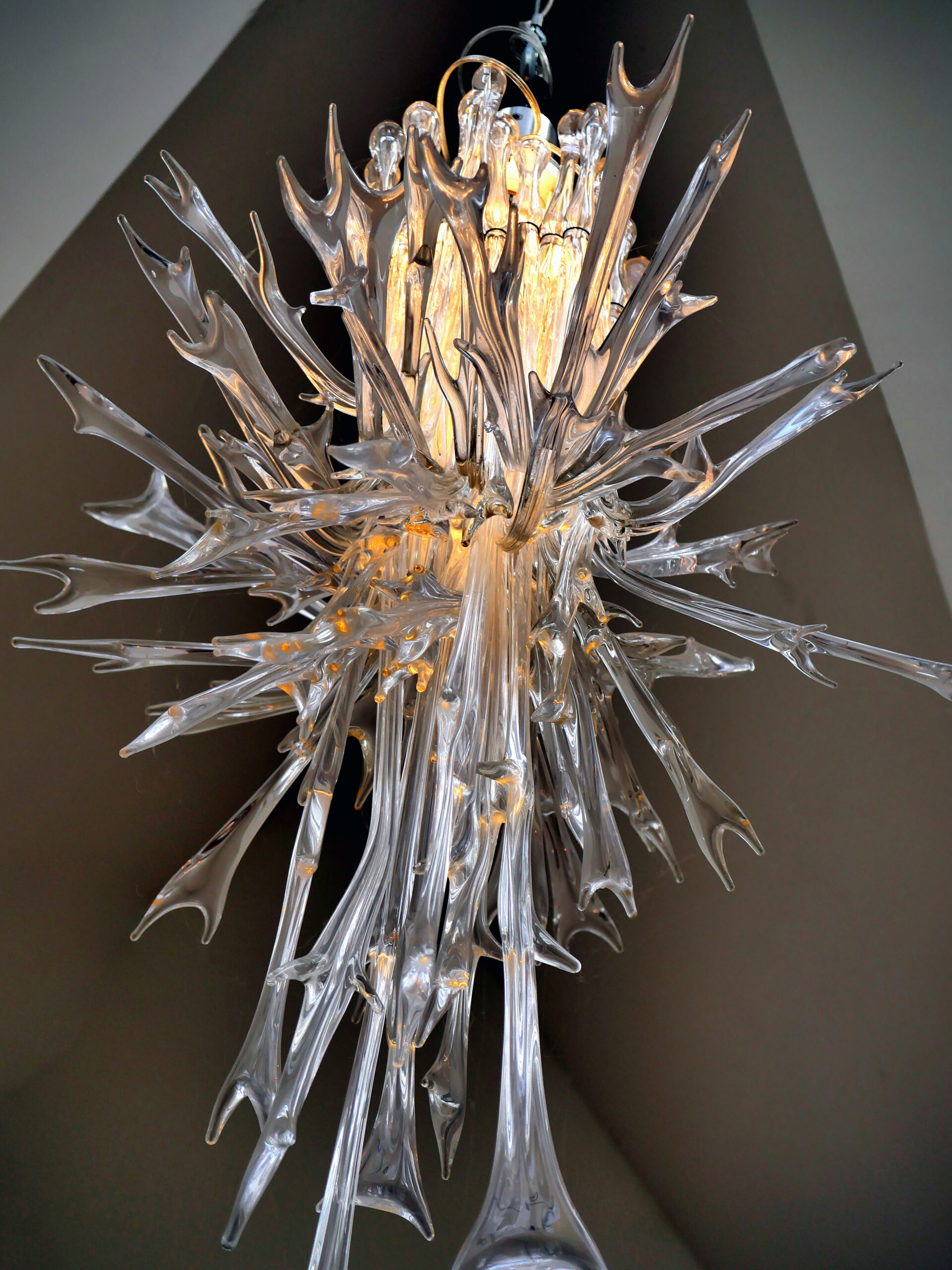
“People have collected paintings and sculptures forever,” he says. “Even the art of photography, which is just a little over 100 years old, is much older than glass. So even though the practice is centuries old, historically, glass was functional. It only became part of the fine art world during the last 20 or 30 years. I think the first college major in glassblowing was created in the late 80s.”
In fact, when Bursuker attended the Hartford Art School at The University of Hartford to study photography and sculpture, there was only one glassblowing course offered. It seemed interesting, so he took the course. It changed his life.
“When I left college, I knew that I didn’t want to stop glass blowing, but I also didn’t know exactly how to have a career in it because nobody really outlined that for me,” he remembers. “So, my first job was at a graphic design firm, but my second job was working as a part-time glassblowing assistant at UrbanGlass in Brooklyn.”
Bursuker hustled. Every morning, he’d go to the studio and ask who needed help. He would work for whoever he could, often assisting three or four different people each week.
“People would just hire me out and book me for different days,” he explains. “The studio was set up in a way that the older generation of professional glass blowers hired young up-and-coming artists. So, I spent a few years running around and working for everybody, and then one day, I decided to make something of my own and begin building up a portfolio.”
In 2005, Bursuker showcased his work for the first time at a trade show in Baltimore. Over the next few years, he created and showcased original work at a variety of trade and gift shows while also traveling the country to work for different glass artists. Slowly, he built a network of people who were interested in his work.
He and his wife (they met at his first job) moved to Somers in 2008 and North Salem in 2018. During that time, he commuted to UrbanGlass in Brooklyn three days a week – it was two hours each way. And when he was offered an adjunct teaching position at his alma mater around 2016, he then began commuting to Hartford the other two days a week.
Finally, in 2020, Bursuker completed the renovation of the two-level barn on their property, transforming the ground level into a fully operational glass workshop that includes three kilns and a finishing studio, and he created a private gallery upstairs. The four-hour commute to Brooklyn was over. He named his new space Evari Studio, after his two children, Eve and Ari.
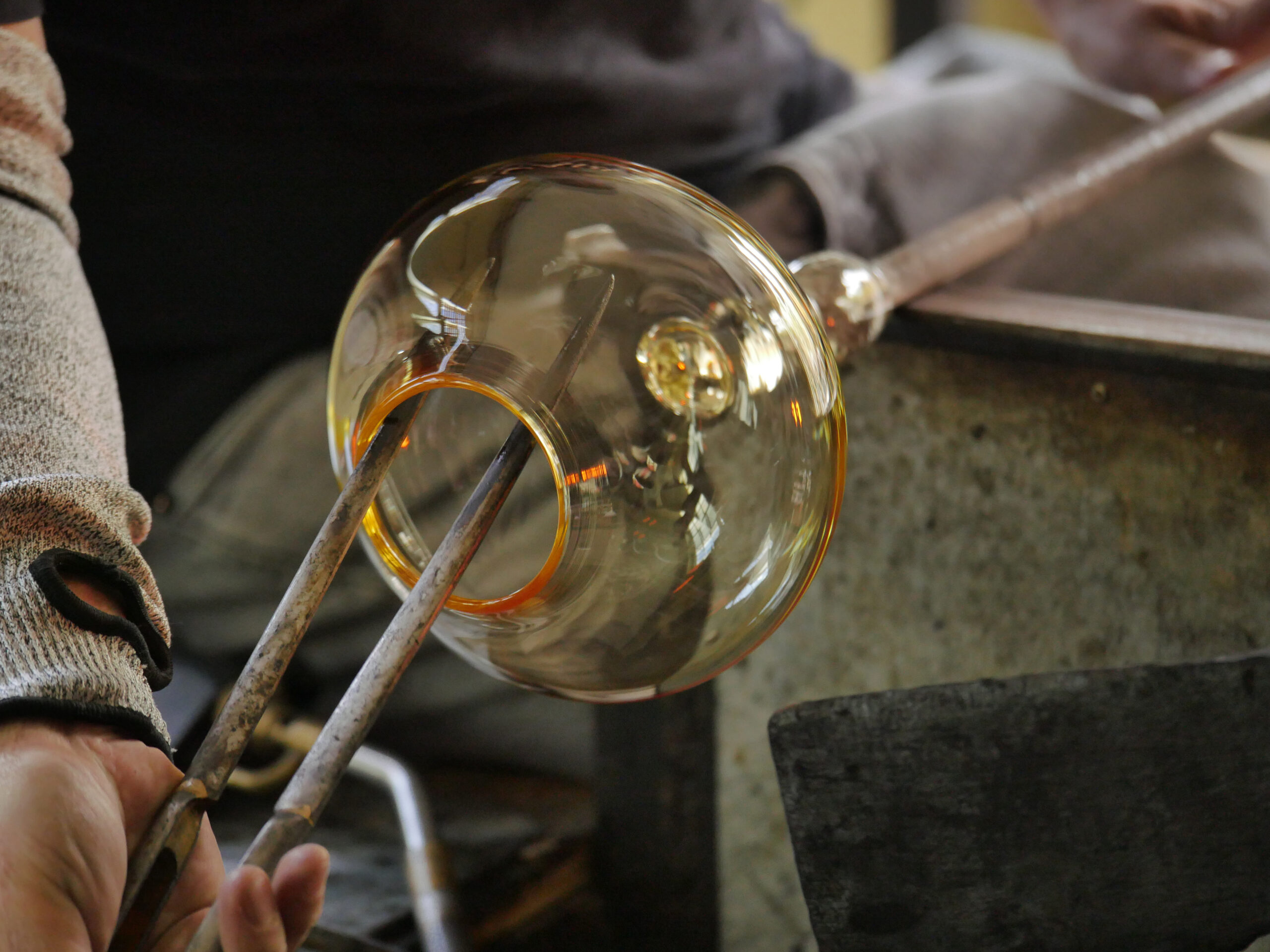
Blowing glass
Although art is a creative process, Bursuker usually makes a plan before he begins creating complex forms where specific proportions are required, such as a chandelier where each part must fit together.
“I like to draw it out first,” he explains. “In some cases, I’ll do full-scale drawings so I can understand how much glass I need to use. Or, when developing a new line of candlesticks, I’ll draw a bunch of different shapes and eliminate the ones I don’t like before I create them.”
Lately, Bursuker has modernized his approach to this ancient craft by sketching his work digitally on a 3-D app. Now he can create one drawing, instead of many, and look at the lines from every angle.
“It allows me to see things in multiple perspectives with just one drawing,” he says. “I can look at the lines and spin it around to see the wall thickness and refine things quickly. It’s become so simple and intuitive for me, and it’s been a huge game changer in the last couple of years.”
But some things are still done the old-fashioned way.
“One of the things that’s interesting about blowing glass is that you can’t just stop,” he says. “You have to keep going until that piece of glass is finished. I’m constantly moving according to the temperature of the material. When it’s cooled down, I can slow it down, but as it gets hot, I have to turn faster, and I have to keep it straight and even. We use a fair amount of centrifugal force and gravity to shape the glass. It’s challenging work, and sometimes, the bigger pieces can take a couple of hours, so it’s an intense process.”
When the project involves creating a piece of glass with precise measurements, Bursuker uses a variety of calipers, which are tools that can measure the outside diameter, inside diameter, wall thickness, etc. As soon as the glass comes out of the kiln, he rolls it into the shape and size he believes he needs, measures it with a caliper, and then returns it to the oven to make minute adjustments until the diameter is as close to correct as he can get it. Calipers are such an essential part of the glassblowing process that he used one for his business logo.

Expanding his brand
Today, Bursuker’s business is a combination of his own line of products, commissioned work and artistic sculptures.
The Evari Studio collection includes a line of lighting (Bursuker prefers the term “illuminations”) that features chandeliers, pendants, wall sconces, table lamps and candlesticks. There’s also a line of home decor items that includes design-forward vases, bowls, cloches, decorative objects, cake plates, cheese platters and candy bowls.
His commissioned work comes from the relationships he’s developed with numerous architects, designers, interior decorators, lighting design companies and artists throughout the area. While some purchase items from the Evari Studio collection, others request items manufactured under their name. They turn to Bursuker because, unlike a factory, he can make items in any size and color, within reason.
But Bursuker is quick to tell you that Evari Studio is not a production glassblowing studio. They don’t blow into molds or manufacture the same pieces over and over again. And you won’t find paperweights or Christmas ornaments in any of his collections – he describes his work as “more decorative and out there with a range of pieces from simple to complicated.”
“I can be more creative with my sculptural pieces than I can with lighting because lighting has to serve a purpose,” he explains. “So, immediately you have these parameters to deal with, but that’s also cool because it presents a challenge. But even with my decorative items, I’m experimenting. For example, I have several variations of candlesticks. I like to come up with a new design, create a collection of them and put that collection out there. And once that collection is gone, sometimes I go back and make it again, and sometimes I don’t.”
Bursuker is currently creating a series of hand-sculpted illuminated glass trees that feature a handmade base carved out of solid chunks of walnut.
“The base has a rechargeable lithium-ion battery that powers an LED light to illuminate the glass tree,” he describes. “So, you can put them out on display and recharge them later, or you can just leave them plugged in and have them function like a light.”
It can take Bursuker up to four hours to sculpt one glass tree, and each one is unique. He begins with a solid piece of glass, slightly larger than the size of a softball. By using a variety of hand tools and glass sculpting techniques, he first shapes the trunk and main branches. The remaining branches are created and adhered individually.
“Because glass can’t cool down while worked, there’s a very high risk of branches breaking during the process,” he says. “When branches break, I often leave them and work around them as trees have natural breaks. I try to respect the architecture and proportions. I want them to be really elegant and look like they’re still moving even though they’re solid glass. It’s a very intense but rewarding process.”
He’s also working on photo-etched hand-blown glass sculptures that are both wall and pedestal pieces. For these, he carves imagery (mostly of trees he’s photographed) onto large glass tiles.
“After I’ve carved the image, I’ll do a variety of different things,” he says. “I’ll include color and maybe textures in the glass, and sometimes I will cast a three-inch thick layer of glass on top so it creates a kind of monolithic sculpture. I’ll also make a series of tiles to hang in sequence on the wall – it could be four or six or 10 tiles that create one image together.”
In addition to his gallery, private homes, fine restaurants and hotels, country clubs and breweries throughout the world, Bursuker’s work can also be found in local and national galleries throughout the country.
His lighting ranges in price from $500 to thousands of dollars, and the home décor items also vary in price – cloches are around $600, and candlesticks are $400 – $900. His new glass trees are $2,000 – $3,000 and the wall installations are $4,000 – $10,000.
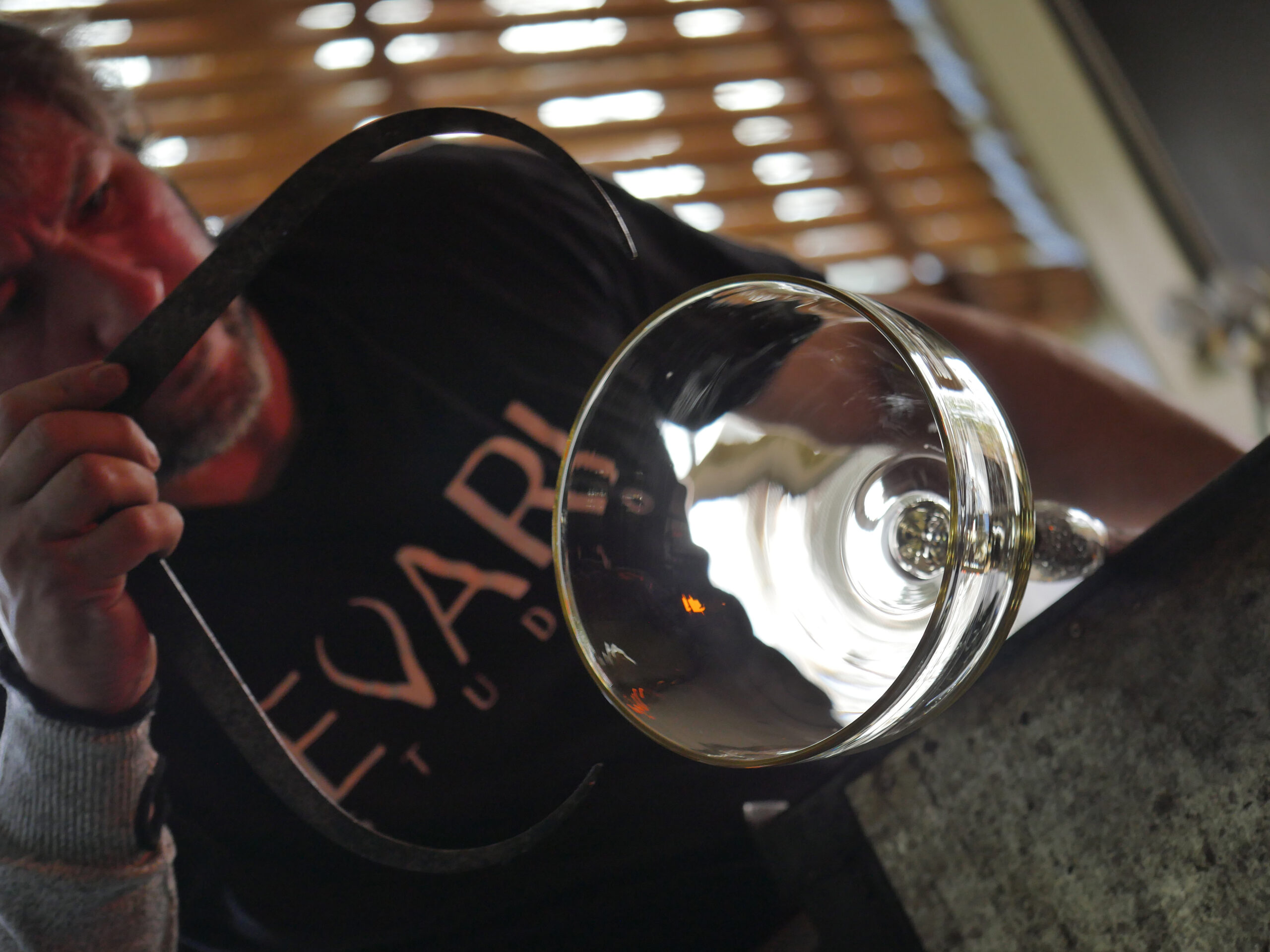
Walking the walk
Bursuker’s work also bleeds over into his personal life. He’s purchased glass jewelry for his wife (although he promises that her engagement ring is actually a real diamond), his four cats drink out of custom-made glass bowls (designed to prevent one of the cats from tipping it over – a former favorite pastime), his human family members mostly drink from handmade glasses, and there’s glass art throughout his home.
“My wife complains because I’m often taking our art out of the house,” he says. “I’ll make something, and I’ll bring it into the house and live with it for a while. And then I’ll bring it out to my gallery and someone will buy it. Then my wife asks me what happened to that piece, and I’ll have to tell her it’s gone.”
And even though he’s worked with glass for over twenty years, is a part-time professor and makes a living as a glass artist, Bursuker still considers himself a novice.
“I think you can live several lifetimes and still not master this material,” he explains. “And if you feel like you’ve mastered this material, I think you’re lying to yourself.”
Bursuker’s work will be on display at Chroma Fine Art Gallery in Katonah from May 16 – June 18.
This article was published in the May/June 2023 print edition of Katonah Connect.
Gia Miller is an award-winning journalist and the editor-in-chief/co-publisher of Connect to Northern Westchester. She has a magazine journalism degree (yes, that's a real thing) from the University of Georgia and has written for countless national publications, ranging from SELF to The Washington Post. Gia desperately wishes schools still taught grammar. Also, she wants everyone to know they can delete the word "that" from about 90% of their sentences, and there's no such thing as "first annual." When she's not running her media empire, Gia enjoys spending quality time with friends and family, laughing at her crazy dog and listening to a good podcast. She thanks multiple alarms, fermented grapes and her amazing husband for helping her get through each day. Her love languages are food and humor.


